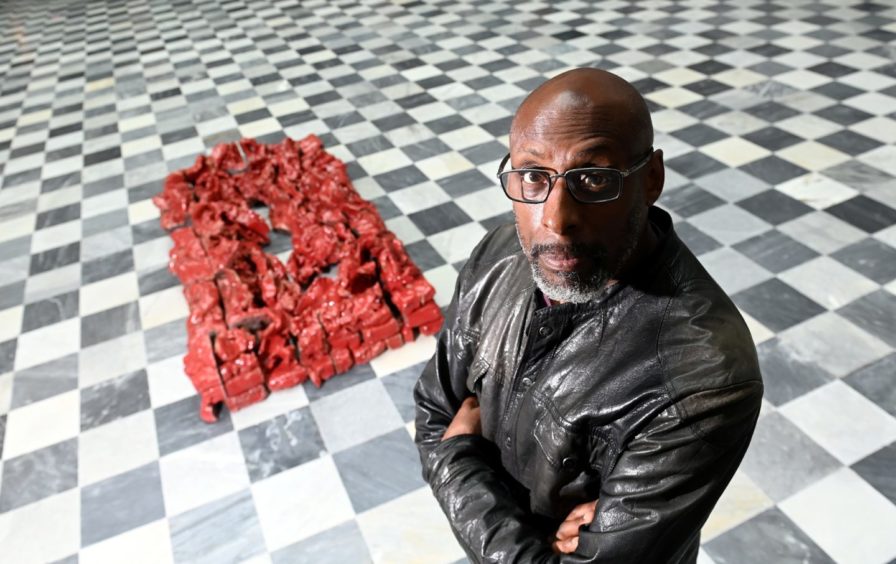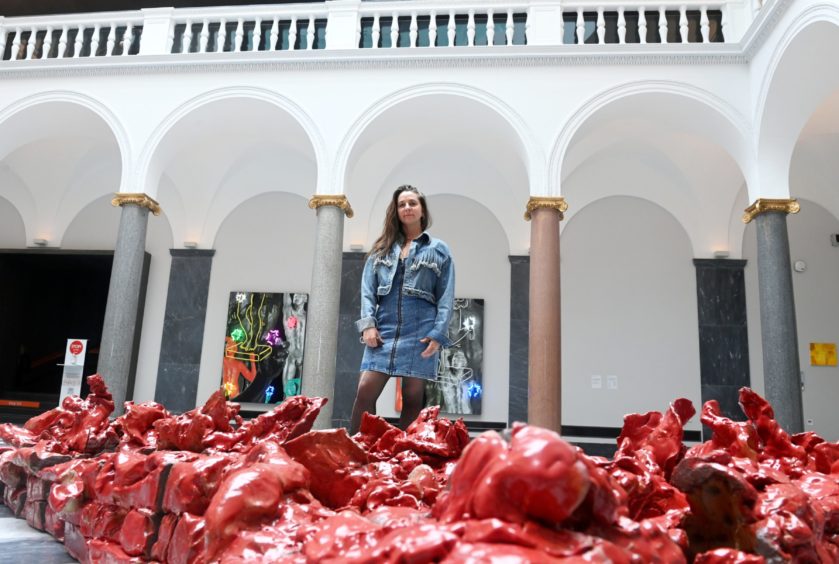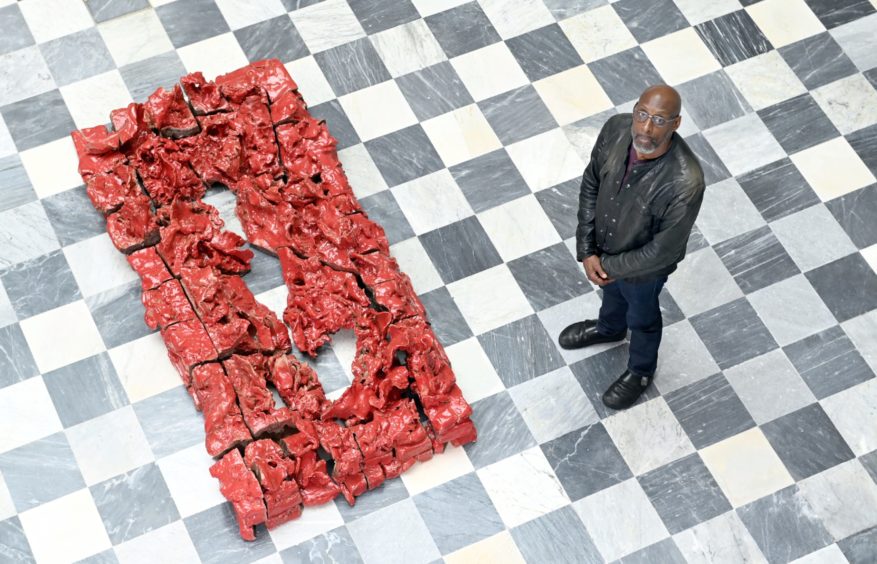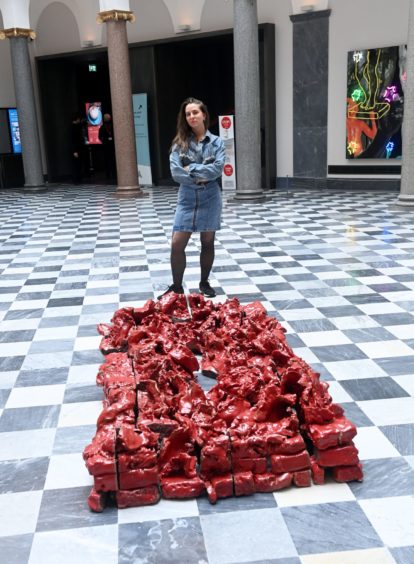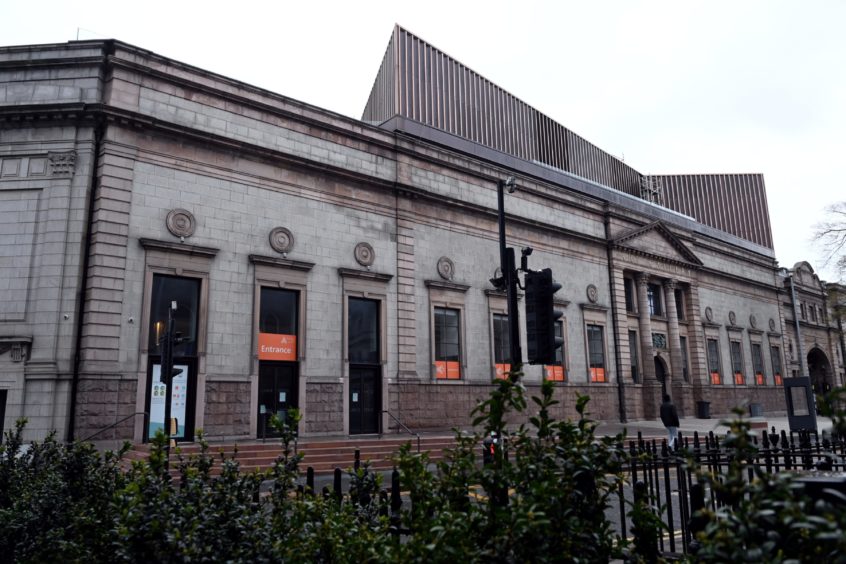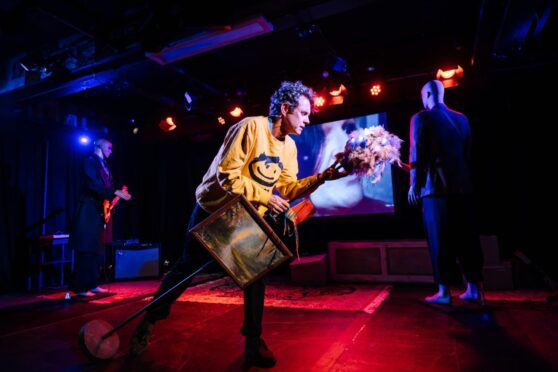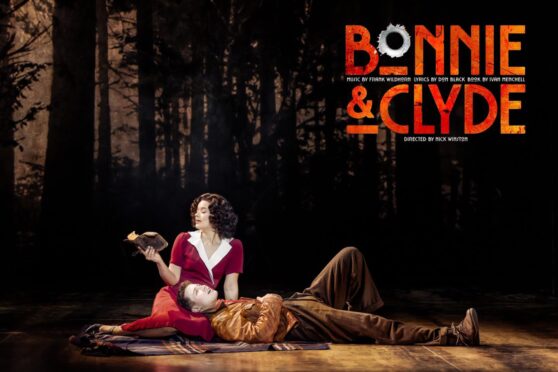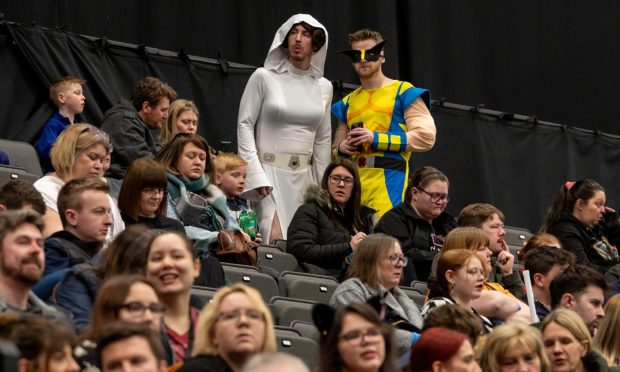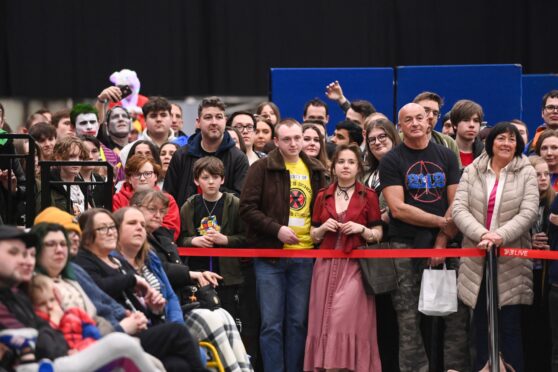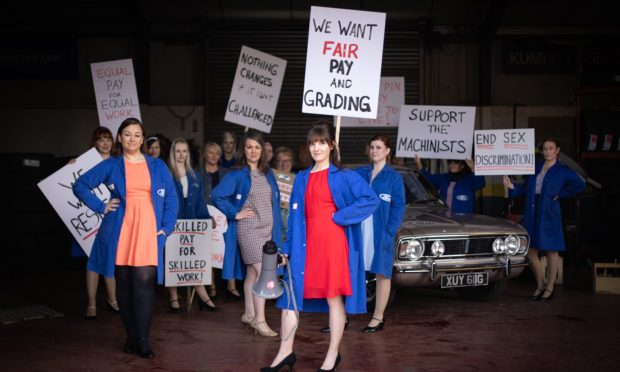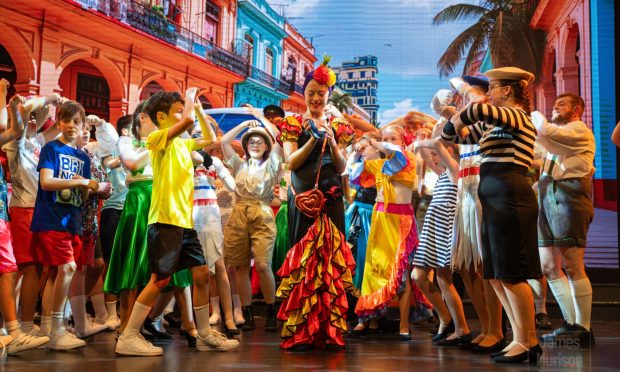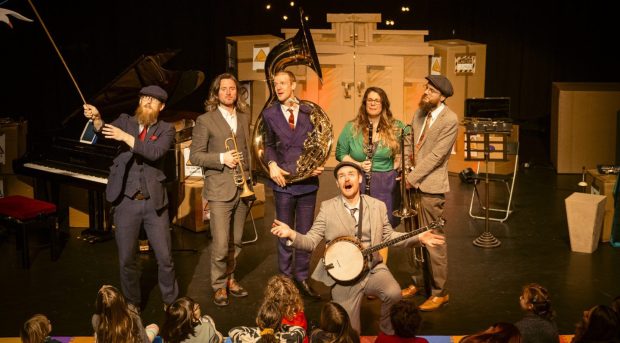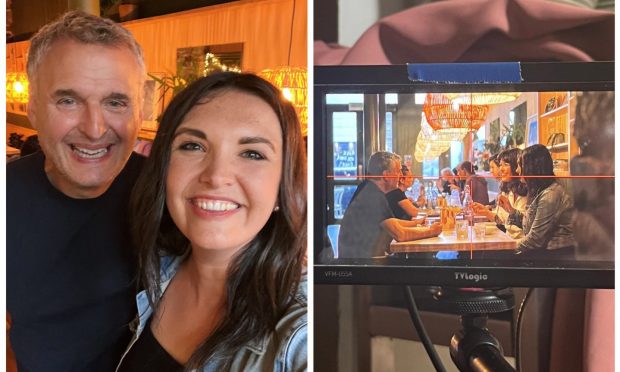Carer Earl Solomon was buried alive … to help create a stunning new sculpture specially commissioned for Aberdeen Art Gallery.
But far from being unsettling, the support worker found his experience with artist Florence Peake – which saw him entombed in clay then gently pulled free – almost spiritual.
“When I came out of it, I told Florence it was almost like being born. It was really weird… but it was quite profound,” said Earl, who helps people with mental health problems and learning disabilities in his work with the city council.
Both Earl and Florence were buried, with wet clay layered over them in a constructed “pit”, to create her sculpture Crude Care. The work was commissioned for the city’s gallery as part of British Art Show 9, now running at the Schoolhill venue.
Now the striking sculpture – a bright red, almost organic-looking work – is in pride of place in the Sculpture Court for the three-month run of BAS9. It will then go on the road for the prestigious show’s UK tour. After that, it will return to its permanent home at Aberdeen Art Gallery.
Birthing ritual in Crude Care’s creation
Earl’s part in the “birthing ritual” – as Florence described it – was the culmination of months of workshops that the artist ran, working with several local care professionals and non-professional carers.
The support worker, who is a trained sculptor and artist in his own right, said he agreed to be buried alive because he “hadn’t been doing anything crazy for a long time” and thought it would be interesting.
Earl said: “Being buried in it was strange. I thought: ‘Is this going to be claustrophobic, even though I’m not. What if I find it uncomfortable?”
But there was a sense of feeling at peace, at rest, just lying there with the clay on you.”
“But there was a sense of feeling at peace, at rest, just lying there with the clay on you. You felt the weight of it on you. It wasn’t restrictive, it was more like you were being hugged.”
Once completely sealed in, with just a small breathing space, Florence told Earl it was up to him to come out whenever he was ready, with both the artist and her long-time collaborator, dancer Kirstie Richardson, ready to ease him carefully from the clay.
“She said just take your time. Try moving and breathing, so from the outside it’s like the movement of something moving in a cocoon about to emerge,” said Earl, who in workshops had described to Florence his training in moving and handling patients gently and safely.
Delighted to create work for Aberdeen
“So I just took my time coming out, then being taken out of it. First my arm, then being rolled over. It made me think about when you do moving and handling, the support you give. I thought, ‘oh this is what it feels like’. I wasn’t being yanked out.”
The splayed mud and fin-like shapes left by their erupting from the clay was then further pulled at, tugged and flattened, said Earl, before the work was fired.
Florence, who is a sculptor, painter, dancer and performance artist, said she was delighted to be commissioned by BAS9 to create the work for Aberdeen Art Gallery and was inspired by the Granite City’s geology and extractive industries, from granite quarrying to North Sea oil drilling.
This inversion of that huge hole in the ground, which has been turned upside down into this spectacular landscape and glistening silver city.”
“The geology here is so integral to the economy, to the community, so I was interested in all the extractive industry and the impact that it has had on the community and the landscape,” said Florence, who is based in London.
She was particularly struck by the idea of the massive quarries, such as Rubislaw, and watched historic videos of blasting work there.
“A lot of Aberdeen’s architecture is from this, so it’s this incredible thing of this inversion of that huge hole in the ground, which has been turned upside down into this spectacular landscape and glistening silver city,” said Florence, who also visited Blackhills Quarry.
The artist also wanted to draw parallels between the heavy extractive industries and the extraction of human labour, especially in the Covid pandemic, from carers, nurses and professional support workers.
Drawing parallels with care workers
The pandemic meant their workshops, which saw them working with clay and talking about their jobs, were conducted via Zoom, leading up to the creation of the piece.
Florence said: “I think it’s a kind of metaphor for landscape, but it is also bodily and visceral. It has a direct physical experience with the bodies. It’s very much a recording of the gestures and actions of that, almost like a document, but also a metaphor for extraction and exploitation.”
The finished colour, that deep red, was a deliberate choice, said Florence.
“It looks fleshy and organ-like, but there is a sense of something being turned inside out, like a body turned outside. It is that feeling in the quarry where you see it’s almost surgical, almost looking inside the earth.”
If you keep looking you see more and more, maybe a footprint or handprint, so you can see where the bodies have been.”
Florence hopes visitors to the gallery will linger over Crude Care.
“It’s always a pleasure and delight if people engage with the work and don’t just walk past it or stand for five seconds,” she said.
”I think if they spend some time with the work they will find there is a lot of detail. If you keep looking you see more and more, maybe a footprint or handprint, so you can see where the bodies have been.”
Hope people get a spiritual feeling
Crude Care is actually a work in three parts. There is the sculpture itself, but also a film showing its creation from workshops to burying ritual. The third part is a performance piece, with spoken word which Florence said was “extracted” from conversations with the carers.
She performed it herself at the launch of BAS9, lying on the floor, laying ceramics over herself, while intoning the words. For the run of the show, the piece will be performed by some of the carers who took part in the workshops, including Earl. Dates can be found in the programme of events for BAS9 in Aberdeen.
Earl says he is proud of the finished work of Crude Care and the way it marks and honours the work of carers – both professional and non-professional – and what they have been through during the pandemic. He is delighted it will be shown in the cities visited by the British Art Show on its UK tour, before Crude Care comes home to Aberdeen.
Earl said: “Watching the film and looking at the piece (I hope people) might get that feeling of human connection to nature, because we tend to separate ourselves from nature. It might sound weird but it was almost like spiritual and I hope people watching get that feeling from it.”
